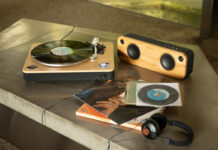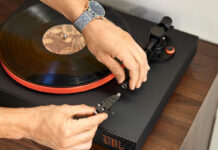 The physics of sound make it impossible for robust audio to be broadcast from the tiny speakers that are installed in today’s HDTV’s. Whether you have a 1080p or 4K monitor, these beauties are meant to be seen, not heard.
The physics of sound make it impossible for robust audio to be broadcast from the tiny speakers that are installed in today’s HDTV’s. Whether you have a 1080p or 4K monitor, these beauties are meant to be seen, not heard.
The good news is that you have a litany of options when it comes to upgrading the audio to ensure it keeps up with the magnificent visuals your TV produces. Your budget, available space, and overall use pattern will determine which technology best suits your needs.
Sound Bar
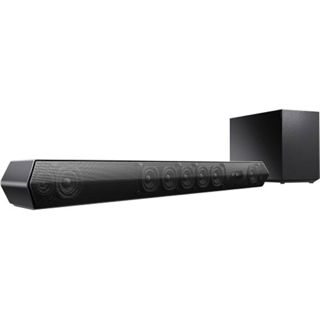
Sound bars are sleek and discrete, elegantly designed to compliment the TVs they’re paired with. Speaker manufacturers have combined this visual appeal with superb audio given they have the freedom to incorporate drivers large enough to reproduce the majority of the audio spectrum.
If the primary use for your monitor is watching TV, as opposed to a lot of movies or listening to music, and you don’t have a lot of extra space, this is a high-value option. Sound bars feature multiple speakers built into a single unit that will snugly fit under your TV and allow you to upgrade your audio experience without a huge investment of space and money.
Most come complete with a subwoofer, often wireless, that will work in tandem with the bar to ensure lower frequencies are seamlessly integrated, providing a sonically pleasing, full range sound. At a recent gathering I attended, I was genuinely surprised to discover that the background music, which I had been appreciating for the sound quality, was coming from a sound bar and sub combo.
Sound bars are very user friendly and quick to setup, generally taking less than 30 minutes, even for the uninitiated, and will not leave you with a mess of cables to clean up.
 Some sound bars boast that they will replicate surround sound, using the walls in your room to reflect sounds and make you believe it came from a direction other than the source. If surround sound is appealing to you this may be a great selling feature, however, virtual surround has its limitations. You may have some success in a small, rectangular room, but forget about it in any open concept space. If true surround sound is what you’re going for, you probably should consider one of the following options.
Some sound bars boast that they will replicate surround sound, using the walls in your room to reflect sounds and make you believe it came from a direction other than the source. If surround sound is appealing to you this may be a great selling feature, however, virtual surround has its limitations. You may have some success in a small, rectangular room, but forget about it in any open concept space. If true surround sound is what you’re going for, you probably should consider one of the following options.
5.1 Audio
The accessibility of home theatre surround sound was revolutionized with the introduction of 5.1 audio. At the turn of the century, as DVDs with digital 5.1 soundtracks replaced VHS as the standard for home viewing, the interest and demand for high quality home theatre surround sound began to grow. Home theatre audio was no longer out of reach for the average person as speaker manufacturers flooded the market with 5.1 products that could fit any budget. Like any quality technological advance, this one has staying power, and is equally relevant today.
 All you need to enjoy the fruits of this audible advancement is to create a home theatre that incorporates the components necessary to reproduce all of the audio channels. In a 5.1 system, 6 speakers are required: left, right and center speakers, two surround speakers, and the “point 1”, which refers to a subwoofer. Explosions, jet engines, car chases and pretty much every dramatic or suspenseful scene in a movie is significantly enhanced by a subwoofer. Once you experience a good sub, you’ll never go back.
All you need to enjoy the fruits of this audible advancement is to create a home theatre that incorporates the components necessary to reproduce all of the audio channels. In a 5.1 system, 6 speakers are required: left, right and center speakers, two surround speakers, and the “point 1”, which refers to a subwoofer. Explosions, jet engines, car chases and pretty much every dramatic or suspenseful scene in a movie is significantly enhanced by a subwoofer. Once you experience a good sub, you’ll never go back.
Which setup is right for you will be determined by your budget and the space you have available. In addition to the speakers, you’ll need an AV receiver to process the audio/video signals and drive the speakers. There are dozens of receivers to choose from; selecting the right one for your setup can be daunting given the abundance of features and technical specifications. Best Buy reps can walk you through the options and help narrow down the choices based on your needs.
Speaker System or Individual Components?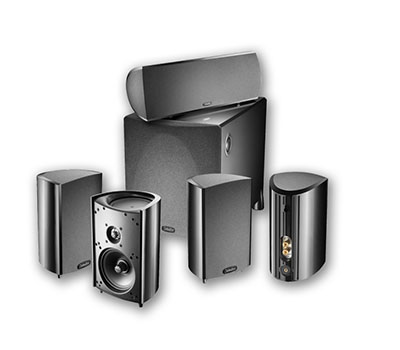
Various speaker manufacturers sell complete 5.1 systems with everything you need: a center-channel, four matching speakers and a sub. The speakers in these packages are usually small, while producing enough sound to captivate most audiences. If you’re looking to incorporate a 5.1 system in your home and don’t want to renovate or feel like you’ve been invaded by large speakers this is the way to go. A stellar option is the ProCinema line by Definitive Technology, pictured here.
Building your home theatre out of individual components gives you much more choice and flexibility to tailor it to your needs and individual preferences. Traditional cabinet or electrostatic towers, bi-polar or di-polar surrounds, multi-driver subs, and in-wall systems all become options available to take your experience to the next level.
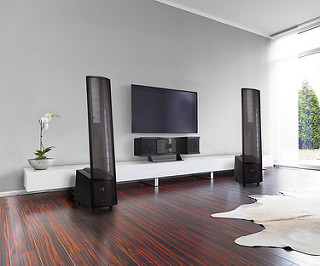 If you are a music lover, as I am, go for individual components. Start with a great pair of speakers that excite you. Music is still recorded in stereo, so no matter your tastes, you can always enjoy your favorite artists as they were meant to be heard. These speakers will become your left and right channels in surround mode.
If you are a music lover, as I am, go for individual components. Start with a great pair of speakers that excite you. Music is still recorded in stereo, so no matter your tastes, you can always enjoy your favorite artists as they were meant to be heard. These speakers will become your left and right channels in surround mode.
The majority of speaker lines will have a perfectly matched center channel, and often surrounds, that will keep your soundstage seamless during movies as they use the same components as your main speakers. Modern surround soundtracks often take the same sound and move it around the room, so match speakers whenever possible. This will ensure that the Millennium Falcon sounds the same as it flies all over the room.
TIP: You can, and should, audition speakers and subwoofers before purchasing and gravitate towards the gear that sounds best to your ear. Once you have a budget in mind, start auditioning speakers from various manufacturers that are priced below what you plan to spend. Manufacturers tune their speakers differently, so you may find that one line matches your ear better than others. As you gradually scale up in price and size, which are not always related, you will likely hear a difference in the quality of sound. You have found your frontrunner when you can no longer detect a difference between the last speaker you heard and the next model up.
Once you have your new 5.1 system home, it will take a couple of hours to setup and fine-tune. This is time well spent. If you’re not technically inclined I’m sure you’ll be able to find a couple friends to help. Just tell them you have new speakers to hook up and they may even bring the pizza. If that isn’t an option, the professionals at Geek Squad can come to your home, setup and calibrate your system.
Dolby Atmos
The pinnacle of surround sound is here and it is called Dolby Atmos.
What is significant about this development is that the audio experience Atmos has created literally replicates how humans experience sound. When we are outside, and a helicopter flies overhead, we hear it above us, not behind or beside us. Dolby Atmos is able to create that type of soundscape for us. The result is a compelling and immersive experience that takes the viewer even deeper into the journey on screen.
It comes from above!
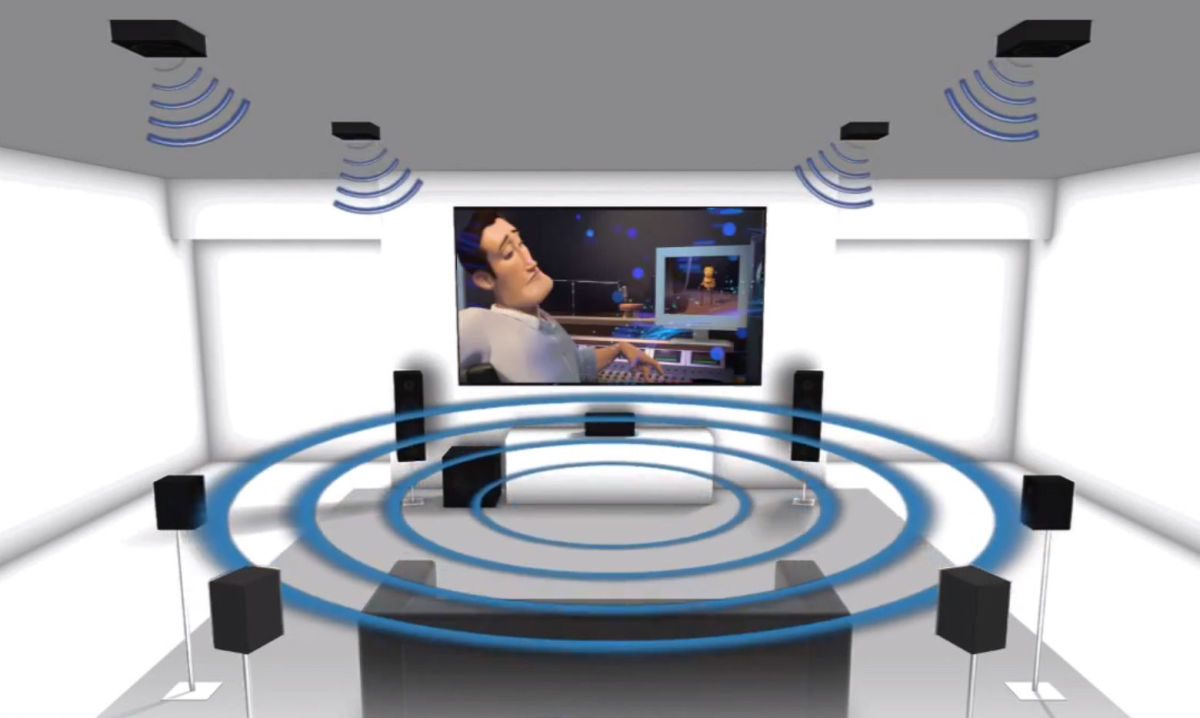
Building on the foundation of 5.1 and 7.1 surround sound, Atmos departs from conventional two-digit numerical description, adding a third number, representing audio coming from above the listener. A 7.1.2 setup would involve 7 channels at ear level (left, right, center, side surrounds, rear surrounds), one sub, and the new element of two channels coming from above you. If your receiver can handle it, Atmos will also support 4 channels above you. (Here are some Dolby Atmos compatible receivers that you can find at Best Buy.)
There are two options as to how this revelation in surround can be incorporated into your home theatre. The ideal situation is to install speakers into your ceiling to provide direct sound output from the Atmos channels, noted as “Height” on the back of an Atmos equipped receiver.
 If that is not an option for you, speaker manufacturers looking to capitalize on this technology are building Atmos modules that can sit on top of your front towers and/or rear surrounds aiming the audio towards the ceiling with the intent of reflecting the sound back to the listener creating the height field.
If that is not an option for you, speaker manufacturers looking to capitalize on this technology are building Atmos modules that can sit on top of your front towers and/or rear surrounds aiming the audio towards the ceiling with the intent of reflecting the sound back to the listener creating the height field.
As noted in the sound bar section, bouncing, or reflecting, audio off walls or ceilings is an inaccurate science and will not perform the same in all environments. If the potential of Atmos has your adrenaline pumping, installing overhead speakers will maximize your results.
Don’t forget to Calibrate
Properly calibrating your Atmos system will ensure that you capitalize on your investment. Given the complexity of Atmos and the number of speakers involved, unless you have some experience setting up and tuning multi-channel audio rigs you may wish to enlist the help of a Geek Squad agent.
A complete list of Atmos enabled Blu-ray releases is available on the Dolby website. Blockbusters such as Mad Max: Fury Road, Terminator Genisys, and Sicario are ready for Atmos consumption, as are the first two seasons of Game of Thrones. As for me, I’m trembling with excitement to hear the Atmos version of Roger Waters: The Wall.
Just as 4K is the next great advancement in home video, Atmos is its exceptionally talented dance partner. They are waiting for you to pick the next song.
Which setup is right for you?
The majority of you in the market for an upgrade to your home audio will probably land on one of these three setups. The good news is that there are no bad options here. The route you choose to go will ultimately come down to your budget, the space you have to work with, whether you want to incorporate a receiver, and your overall audio goals.
There’s nothing like the rush of powering up new gear for the first time; enjoying the journey makes it all the more rewarding. If you have any questions feel free to ask me in the comments and I will do my best to help.
See a wide range of audio tech available now at Best Buy.


